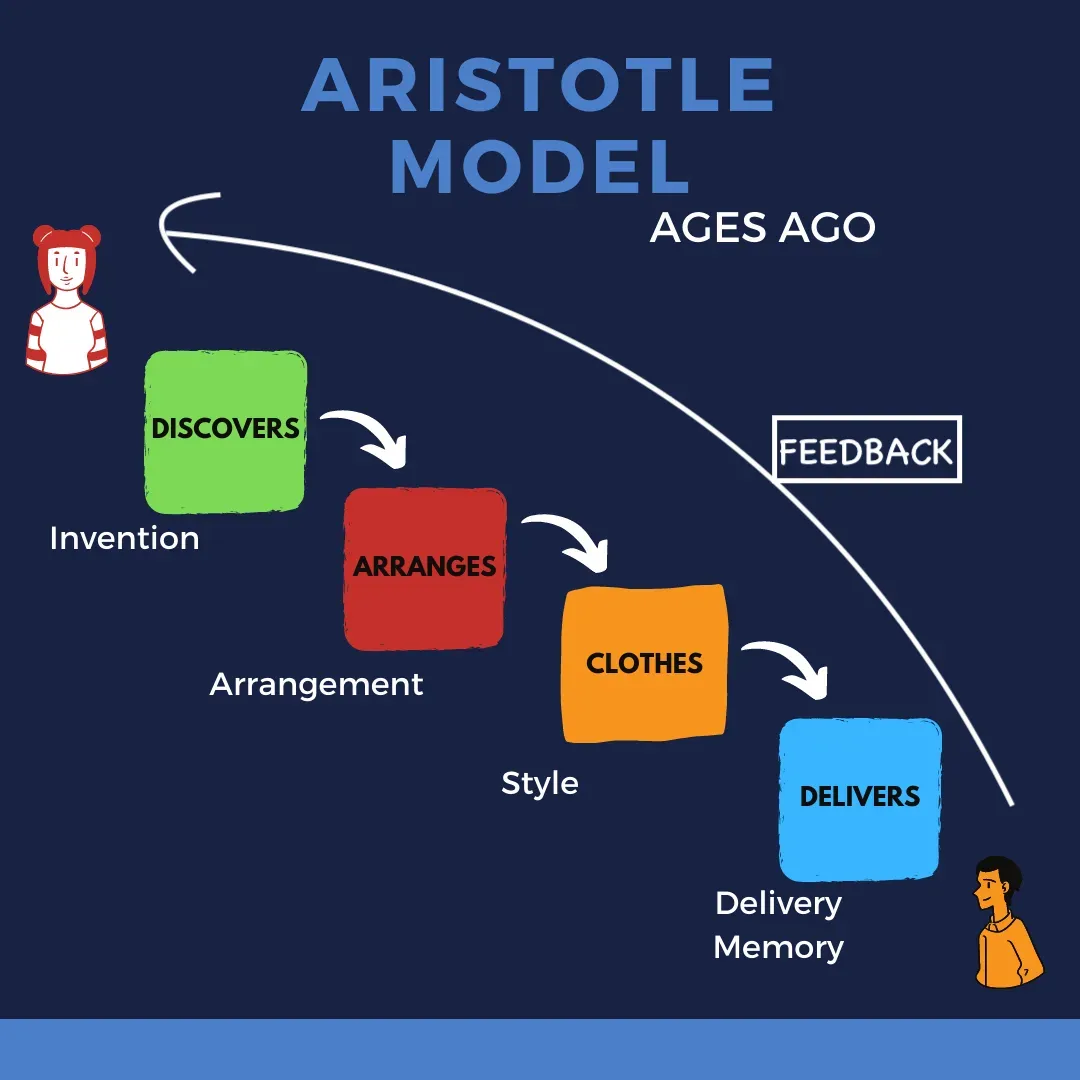
Effective communication is grounded in understanding your purpose, knowing your audience, and closing the loop with feedback.
I cover this in depth in the Super Power Workshop. The concepts of Purpose, Audience, and Context are foundational – the building blocks of communication that actually works - but we also need feedback.
When we are clear about our purpose, we can focus on achieving it and know when we’ve succeeded (or not) through feedback. When we understand who we want to reach, we can tailor our message so it lands with the right person.
Communication without feedback is essentially broadcasting. Sent does not mean received.
Feedback in a Digital Age
In our technology-enabled world, especially with remote work, we send and receive far more messages than ever before. But sent ≠ received. Feedback is what confirms communication has actually landed.
Aristotle’s communication model is simple but insightful:
- Discover: Identify the message worth communicating
- Arrange: Structure it in the best format
- Clothe: Style it with language, visuals, and stories
- Deliver: Send it
Back then, standing on a hill shouting messages, there was no feedback loop – more broadcast than communication. Today, feedback is essential to know whether your communication has worked.

The Four Levels of Feedback
Let’s break down feedback into four key categories:
1. Not Received – No Feedback
The message simply doesn’t reach the recipient. Emails get lost, phone signals fail, or messages end up in spam. We often assume silence means someone is ignoring us, but the reality may be that they never even received it.
2. Delivered – Some Feedback
The message reaches its destination: a green tick on WhatsApp, a “signed for” notification, or an opened email. This is partial feedback, but it doesn’t mean the recipient actually read, understood, or acted on the message.
3. Opened or Read – Partial Feedback
Now we know the recipient opened or read the message. Outlook or read receipts confirm this. But we still don’t know if they digested it, understood it, or did anything with it. Feedback is better, but still incomplete.
4. Full Feedback
Full feedback means the recipient has received, digested, and acted on the message. This could be:
- A response confirming understanding: “Got it, will do.”
- Submission of requested work: “Here’s the report you asked for.”
- A change in behavior or action observable in their work
- Reopening the loop with questions or clarifications: “Thanks, but could you clarify X?”
Full feedback closes the loop and tells us that our message has truly landed. It doesn’t guarantee we achieved our purpose, but it gives us the data to adjust, refine, and improve.
Sent, delivered, opened – none of these mean the message has truly been received. Full feedback is required.
Why Feedback Matters
Without feedback, you cannot be confident that communication has succeeded. Gathering feedback may require:
- Multiple messages
- Better phrasing or visuals
- Following up with reminders or clarifications
Assuming a message was received is one of the biggest causes of miscommunication in the workplace. Feedback is the closing (and opening) loop – it confirms understanding, guides adjustments, and ensures alignment.
Received does not mean communicated. Full and explicit feedback is what tells us whether we’ve achieved our purpose.


